Date Vs Palms: Differences Between Palm Tree and Date Tree
All date palms are palm trees but not all palm trees are date palm.
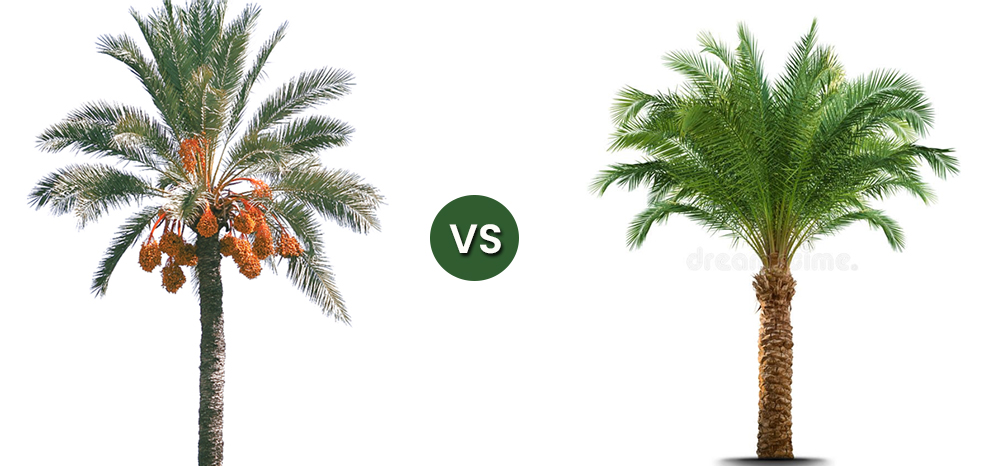
There are several questions surrounding Date Palms and typical Palm trees. People often wonder if they are synonymous or do they differ.
A one-line distinction between the two is that – all date palms are palm trees but not all palm trees are date-producing trees. Hence, not all palm trees can be called date palms.
On comparing Date trees vs Palm trees of other varieties, you can notice other differences as well. The former is cultivated for its edible fruit which is Dates, while most other Palm trees may not have edible, delicious fruits.
Some species of Palm trees produce edible fruits, such as coconuts, while others are grown for ornamental purposes.
Apart from this major distinction, you will find differences in appearance, geography, uses, lifespan, and even care requirements. Let us discuss these differences in detail below:
Date Palms Vs Palm Trees Overview
| Attribute | Date Palms Trees | Regular Palm Trees |
| Fruit | Edible fruits – Dates | Some may have edible fruits, but a few palms do not produce any fruits. Some also have inedible fruits. |
| Leaves |
|
|
| Lifespan | Longer lifespan than regular palms | Shorter lifespan than date palms |
| Growth rate | They have a slower growth rate than regular palms when they are young. It is because date palms put more energy into producing fruit, which can slow down their vegetative growth. | Some of the palm trees may have a faster growth rate, depending on the species. |
| Hardiness zone | 9 through 11. | 8 through 11 |
| Height | 20-80 feet | Upto 100 feet |
| Pests and diseases | Red palm weevil (Rhynchophorus ferrugineus), the palm leaf skeletonizer (Homaledra sabalella), and bayoud disease (Fusarium oxysporum) | Coconut scale (Aspidiotus destructor), the palm leaf hopper (Myndus crudus), and various fungal infections such as ganoderma root rot (Ganoderma zonatum) |
Date palms varieties differ from other palm varieties in a number of things. Below we will compare them on the basis of their care needs, uses, lifespan, growth rate, fruit, growing habits, and physical features.
Difference Between The Palm Tree and Date Tree – Do Dates Grow On All Palm Trees?
No, dates do not grow on all varieties of palm trees.
Palm trees and Date Palms are both members of the Aceraceae Palm family. However, they are different in many ways. A Palm is a general term used to define any member of the Palm family. But, a Date tree refers to the Phoenix Dactylifera species, cultivated predominantly for its edible fruit, Dates.
Palms can grow in many different climates and environments. Some species of Palm trees produce edible fruits, such as coconuts, while others are grown for ornamental purposes.
On the other hand, Date trees are a specific species of Palm tree. They are primarily grown in arid regions of the world, such as the Middle East and North Africa, where they are a vital crop.
In summary, while Palm trees and Date trees are members of the same plant family, they differ in appearance, growing requirements, and the uses for which they are cultivated.
How Does A Date Palm Tree Look Different From Other Palm Varieties?
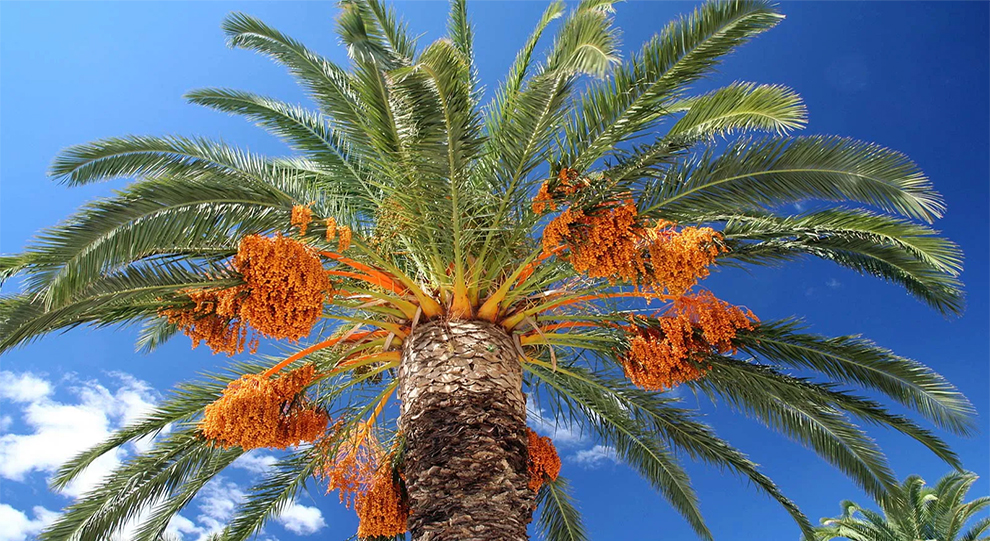
Date Palm trees have a distinctive appearance, which sets them apart from the other Palm varieties. Some of the defining characteristics that distinguish other Date Palm trees from other Palm trees are as follows:
1. Trunk – The trunk of the Date Palm is columnar and thicker, with a ringed appearance and a rough texture caused by the scars left by old fronds. Its trunk is typically gray or light brown and usually grows up to 80 feet tall.
2. Root system – Date Palms have a deep root system extending up to 100 feet underground, helping them adapt to dry and hot environments.
3. Fruit – Date Palms have oval-shaped edible fruits that grow in hanging large bunches. Their fruits start green but gradually turn brown or yellow as they ripen. When fully ripe, the fruit is sweet, soft, and chewy.
4. Leaves – Date Palms have feather-shaped, long leaves arranged in a distinctive V-shape pattern. Each of its leaves grows up to 20 feet and has several narrow leaflets. The leaves are bluish-green and have pointed sharp tips.
Even though some Palm trees might have some of these characteristics, the combination of edible fruit in hanging bunches, V-shaped feather leaves, and rough thick trunks are exclusive to Date Palm trees.
Date Palm Grows In Which Area Compared To Other Palm Tree Varieties?
Native to North Africa and the Middle East, Date Palms are common in regions with dry and hot climates. They are better suited for desert environments and endure high temperatures, sandy soil, and drought. Today, you may even find them in North Africa, South Asia, and the United States.
But other Palm tree species are common in different environments and climates, depending on their necessary growing conditions.
For instance, Coconut Palms are native to tropical regions around the world, such as parts of Southeast Asia and the Pacific Islands. They need a humid and warm climate to thrive. Royal Palms are also native to tropical regions and are common in areas with heavy rainfall that have well-drained soil, such as South and Central America.
In short, you will find a difference between Palm and Date tree growing requirements. Hence, they adapt to different conditions. Where Date Palms are best suited for dry and hot regions, other Palm trees grow best in varying climates and growing conditions.
Date Palm Fruit Vs Other Palm Trees
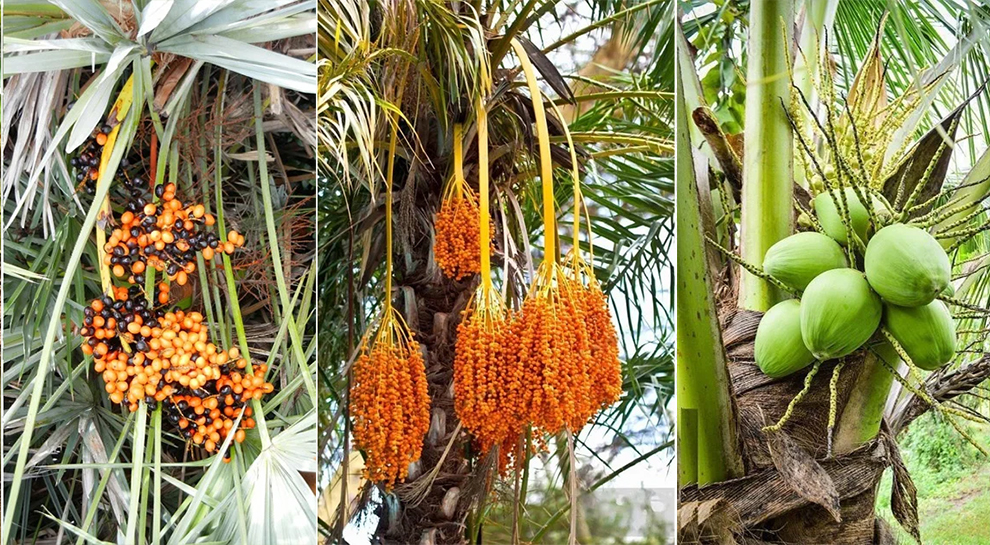
Date Palms produce edible fruits called Dates. The Dates are a nutritious and sweet fruit that has been consumed globally for 1000s of years. Beyond their delicious taste, Dates are an excellent source of potassium, fiber, and other vital minerals and vitamins.
Even though some other Palm tree species yield edible fruits, their fruits might vary in texture, taste, and nutritional value. Here are some examples of other Palm tree fruits
1. Oil Palm – These yield a fruit called oil Palm fruit or Palm fruit. It is rich in oil and goes into making different products like biofuel, soap, and cooking oil.
2. Acai Palms – They produce dark-hued, small purple berries rich in antioxidants and go into making smoothie bowls, juices, and other health foods.
3. Coconut Palms – These yield a hard-shelled, large fruit with creamy and sweet flesh and coconut water. Coconut flesh is rich in fiber, healthy fats, and nutrients and is a popular ingredient in several beverages and ingredients.
4. Canary Island Date Palms – Their fruits are not edible, but you will see ornamental, large fruit clusters, which are this Palm’s distinctive feature and are employed in decorative arrangements.
How Long Does It Take To Grow A Date Palm Tree Compared To Other Palm Trees?
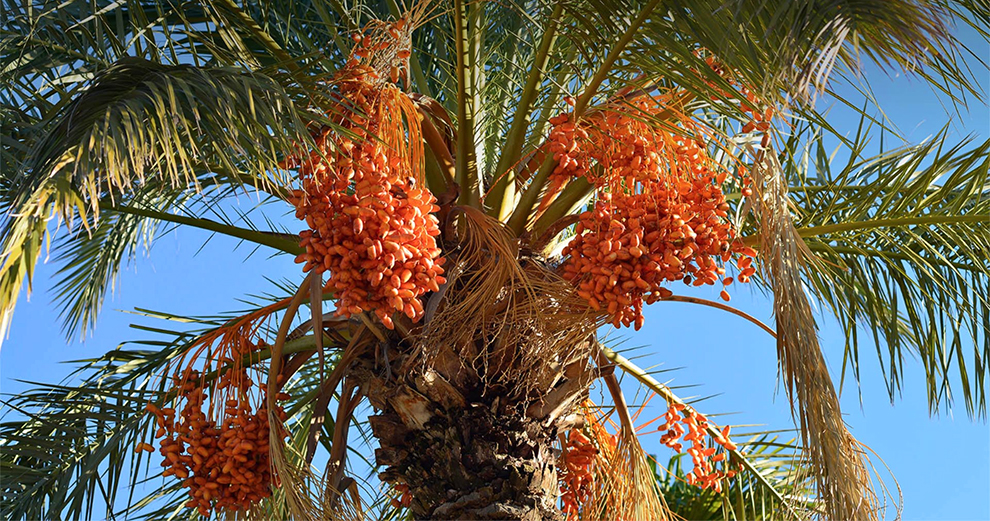
The time it takes for Palm trees to attain maturity will typically depend on the growing conditions and the species chosen. Generally, Date Palms are slow-growing and take several years to mature and produce fruits. Here is an estimated difference between Palm tree and Date tree growth rates:
- Queen Palms are fast-growing species and usually mature within five to ten years.
- Royal Palms are slow-growing Palm species and take 10-15 years to mature.
- Coconut Palms are fast-growing species and produce fruits in only 5-7 years of plantation.
- Date Palms are slow-growing and take 7-10 years to reach maturity and another 3-4 years to produce fruits,
The Lifespan of Date Palm vs Other Palms
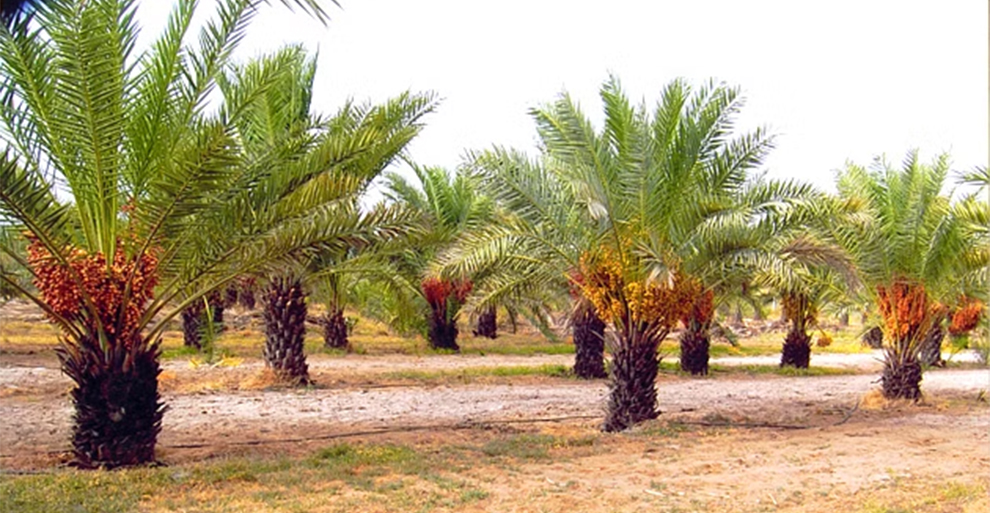
Generally speaking, comparing Date Palm vs Palm tree lifespan, we found that the former has a relatively longer lifespan than others. However, the lifespan of the various Palm species also depends on several factors, such as environmental stressors, growing conditions, and diseases.
Here are some estimates of lifespans for Date Palms and other common Palm tree species:
1. Date Palm – Usually, Date Palms are known for their longevity. Most Date Palm trees can live for up to 100 years or more, provided it gets ideal growing conditions. Some Date Palms in the Middle East are over 1000 years old.
2. Queen Palms – Queen Palms are fast-growing Palm species that live for about 20-25 years.
3. Royal Palms – These are elegant and tall Palm species and live for about six to seven decades.
4. Coconut Palms – These are another prevalent Palm species and live for 80-90 years on average. In ideal growing conditions, they may live for a century too.
Please note these are only rough lifespan estimates. The actual lifespan may vary.
Five Uses Of Date Palm Tree Vs Other Palm Trees
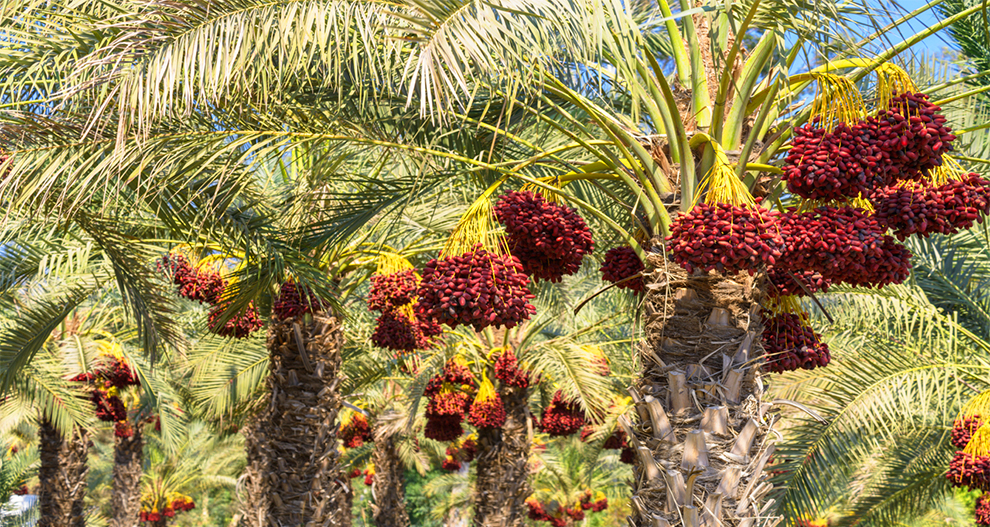
Date Palms have long been cultivated for their fruits. They have innumerable uses that differentiate Date Palms vs Palm trees. Below, we will discuss five such benefits of Date Palms:
1. Edible fruit – As stated, Date Palm fruit is valued for its nutritional value and sweetness. Date Palm trees are one of the few Palm species that yield edible fruit consumed around the world.
2. Medicinal properties – Different parts of the Date Palm tree, such as the sap, leaves, and fruits, have been used in traditional medicine for centuries to treat ailments like respiratory issues, constipation, and fever.
3. Building material – Date Palm leaves are used in construction in several parts of the world. They are also woven into roofs, mats, and baskets and are employed in making traditional furniture.
4. Industrial uses – Date Palm trees are utilized in different industries. For instance, they are a common ingredient in vinegar, alcohol, and sugar production. The tree’s sap is fermented to make wine, and the fruit is used to yield a high-proof spirit.
5. Ornamental value – Date Palms are famous for their ornamental value. These are grown in private gardens and public spaces. They have a striking appearance with their feathery fronds, slender trunks, and tall stature.
Are Date Palms Easy To Care For Compared To Other Types Of Palm Trees?
Comparing the Date palm’s care requirements with reference to other plants, we found that the Date Palms are relatively easy to care for compared to the other Palm tree species. However, they still need some maintenance to thrive.
Some factors that make the Date Palm relatively low-maintenance are as follows:
1. Tolerant to poor soil – You can grow Date Palms in various soils, even saline or sandy soils that are typically unsuitable for other plants. Hence, they are a good pick for areas with low soil quality.
2. Slow-growing – Date Palms usually grow slowly. It means that they do not need frequent maintenance or pruning. But they will grow tall up to 75-80 feet. Hence, Date Palms will demand occasional trimming to ensure the fronds do not become too heavy and pose a danger.
3. Resistant to most diseases and pests – Date Palms have very few natural predators and are resistant to common Palm diseases and trees. It implies they need less frequent spraying with fungicides and pesticides than other Palm species.
4. Drought-tolerant – Date Palms are adapted to desert climates and can survive with minimal watering. Hence, they are a good pick for areas that have limited water access or receive low rainfall.
However, like all plants, even Date Palms will need some fertilization, care, and water to remain attractive and healthy. In addition, they can be susceptible to some diseases and pests. Thus, monitor them and respond instantly if any issue arises.
Can You Grow Date Palms Indoors?
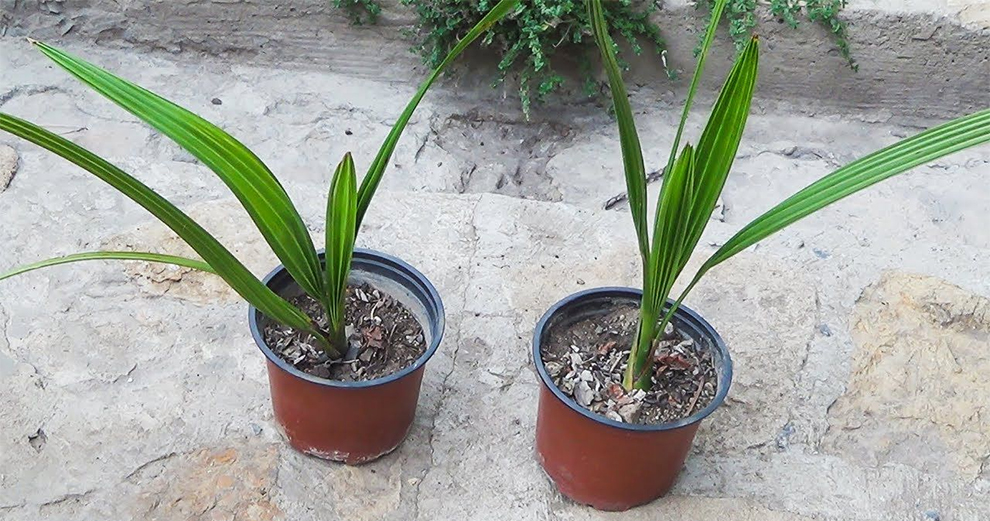
Even though it is technically possible to grow Date Palms indoors, they won’t bear any fruit indoors. Between the Date tree vs Palm tree, other palm tree varieties are a more prevalent choice indoors.
Date Palms are tropical plants that require a lot of space, warmth, and sun to grow. But keep in mind that indoors, they may not have access to adequate natural light, and the air might also be too stagnant and dry for them to thrive.
But if you reside in a sunny and warm climate, you can grow a Date Palm in a large container or pot on a balcony or a sunny patio. However, in this case, you must ensure that the plant receives ample direct sunlight, regular fertilization, and water.
In addition, you must also take steps to shield the plant against extreme winds and temperatures. Thus, if you are adamant about growing Date Palm indoors, you must expose it to as much natural light as possible by keeping the plant near a bright window or using artificial grow lights.
